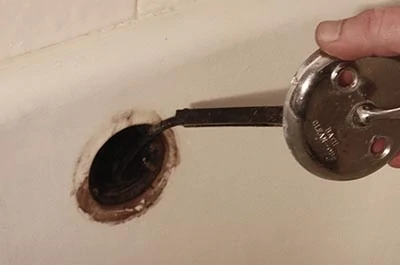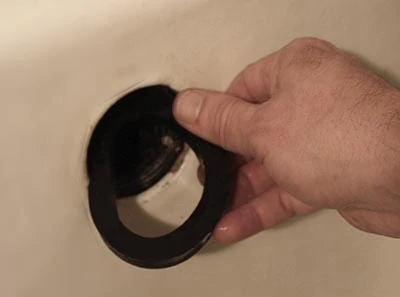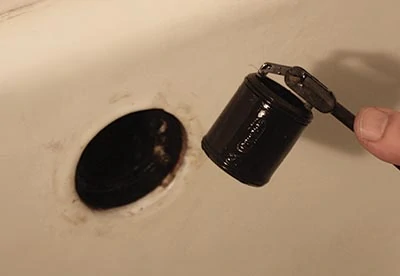A simple leaky gasket can cause a big problem.
By Matt Weber
You wouldn’t think a bathtub overflow drain would be the source of a water leak, especially if you never fill the tub to a level at which water would enter the opening. You, like me, could be very wrong. It didn’t make sense to me that the overflow drain got enough water exposure to be the source of a leak which was ruining a drywall ceiling downstairs. Convinced of this, I replaced a couple of faucet valves, tightened some threaded connections, and sealed a couple different drain connections with silicone tape, yet I still had a leak. I eventually opened up the ceiling and the wall behind the faucet to investigate.
Most frustrating of all: I could not reproduce the leak when I took a shower. Nor did we have problems when my kids took a bath. The tub only leaked when my wife took a shower in it. Finally, as she was showering, I inspected the plumbing from the floor below and followed the active leak all the way up to the overflow drain. Turns out the drain had a leaky gasket. Something about the manner in which my wife showers—whether it’s the way she shampoos her hair or maybe shaves her legs—directs water onto the overflow drain, and consequently past the deteriorated gasket. I only mention this to demonstrate that plumbing leaks can happen in some seemingly unlikely places, and locating the problem can be half the battle.
Replacing the Gasket
The good news is that replacing an overflow drain gasket is a fairly easy fix. The first step is to remove the screws that mount the cover plate.
Pull out the assembly, including the drain plug.
Shown here is the old deteriorated gasket that must be removed.
I used an old wire hanger to dig out the rotted gasket material from the overflow body.
With any luck you can complete the repair from the tub without having to open the wall. But since I had already opened the wall, here’s a look at the rear of the overflow body where the old gasket is falling out.
You’ll need to buy a new overflow washer or gasket from the hardware store.
Note that the gasket is beveled.
When installing the gasket, make sure the thick side is at the bottom.
Use a little plumber’s silicone grease to lubricate the gasket and work it into place around the mouth of the overflow body. The overflow pipe will have a little play (although not much) that should allow you to adjust its position and make room for the gasket.
Make sure it seats evenly for a complete seal around the connection.
Replace the drain assembly and then fasten the plate with the two mounting screws to finish the job.













